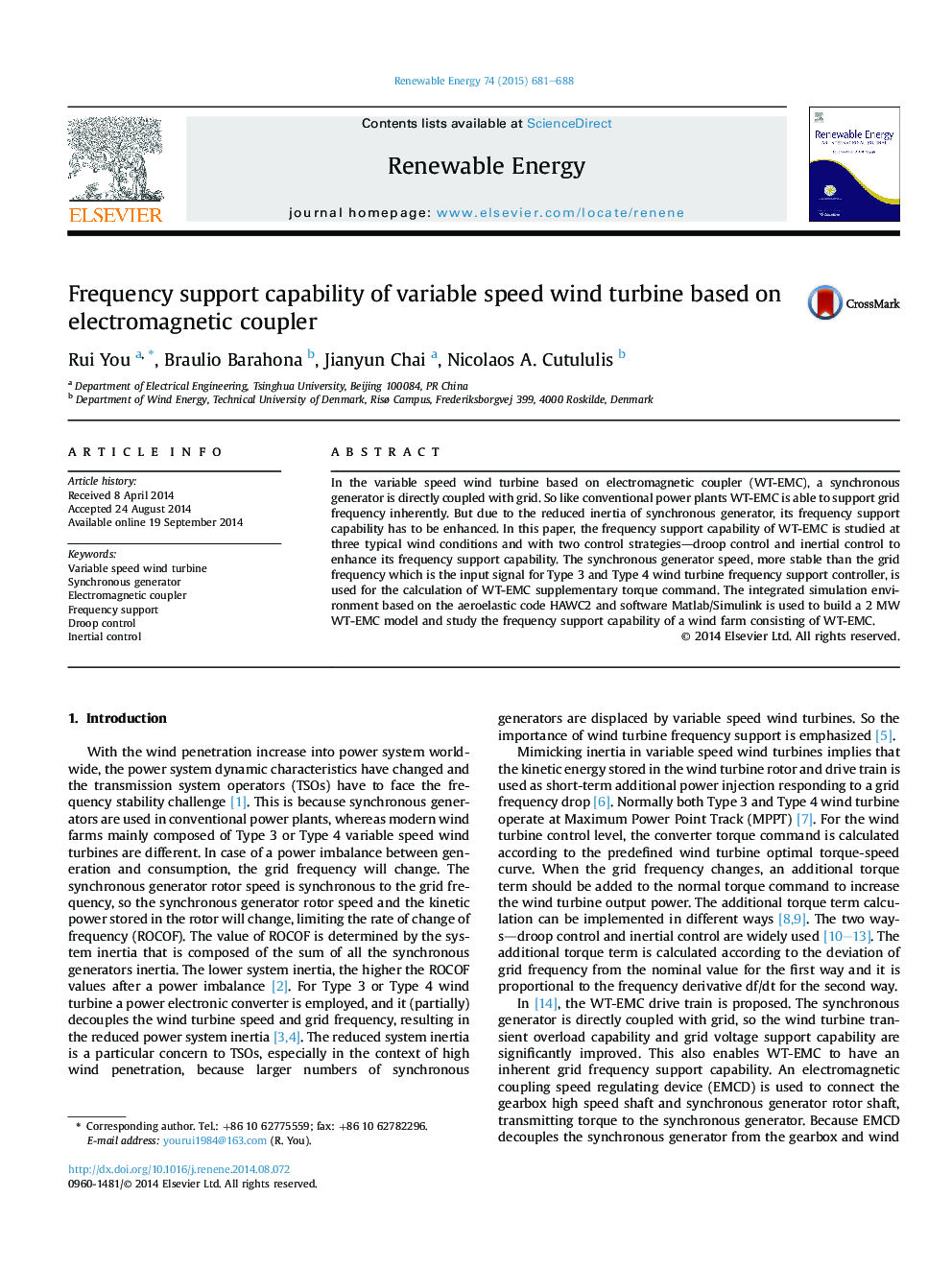| Article ID | Journal | Published Year | Pages | File Type |
|---|---|---|---|---|
| 300021 | Renewable Energy | 2015 | 8 Pages |
•In the novel wind turbine, synchronous generator is directly coupled with grid.•The novel wind turbine has inherent grid frequency support capability.•Droop controller and inertial controller are designed to enhance the capability.•Simulation results confirm the effectiveness of the two controllers designed.•Gains in the two controllers designed should be reduced at the middle wind speed.
In the variable speed wind turbine based on electromagnetic coupler (WT-EMC), a synchronous generator is directly coupled with grid. So like conventional power plants WT-EMC is able to support grid frequency inherently. But due to the reduced inertia of synchronous generator, its frequency support capability has to be enhanced. In this paper, the frequency support capability of WT-EMC is studied at three typical wind conditions and with two control strategies—droop control and inertial control to enhance its frequency support capability. The synchronous generator speed, more stable than the grid frequency which is the input signal for Type 3 and Type 4 wind turbine frequency support controller, is used for the calculation of WT-EMC supplementary torque command. The integrated simulation environment based on the aeroelastic code HAWC2 and software Matlab/Simulink is used to build a 2 MW WT-EMC model and study the frequency support capability of a wind farm consisting of WT-EMC.
